How Does the KÚ Ride?
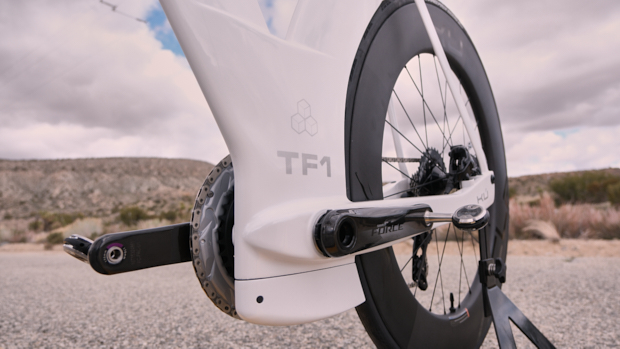
I didn’t like the KÚ bike… necessarily. I liked the idea of the KÚ bike and that’s why I’m spending quite a bit of time on this brand. As to that gap between the bike in theory and in practice it’s like – you could say – going out on a Match date. You’re intrigued by what you see and read, but you’ll never really know until the date. This is the “race report” of my “date” with KÚ. This is how the bike rides, and what I do and don’t like about it.
Usually I talk about the pluses and minuses of a product in that order but I think I’ll switch today and begin with the negatives. Just, before I go there let me just say that for all the ways this bike defies convention it’s a tri bike. Once you’re aboard it’s remarkably… unremarkable. It’s astoundingly normal. But I digress; I was about to harsh on the bike and let me continue.
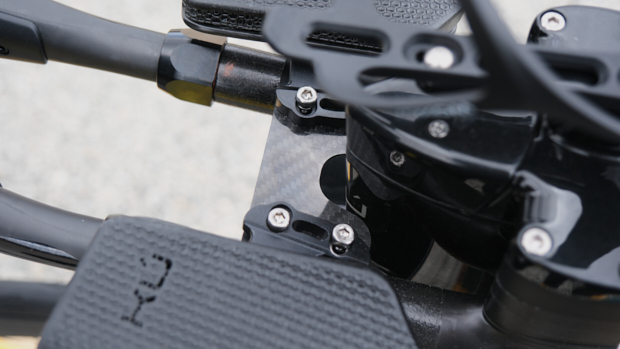
The list of things I would need to change about this bike – and did change to some degree as you’ll see – is below. Let’s begin with armrest narrowness because this actually isn’t a feature with which I was unhappy. I list this because people who want to get elbows really narrow – like, with armrests that almost touch – will not be able to do so on the KÚ. The reason is that the midsection of this bike is drawn up high, to fill in the space that pros seem to want to fill up with water bottles, dirty laundry, road litter, anything (it seems) they can stuff down their jersey fronts. With the design and idea behind this bike I’m not sure that extreme elbow narrowness is as important as with a standard tri bike, but, if narrowness is a thing you value (maybe because of a change in shoulder roundness) there’s a limit to narrowness here.
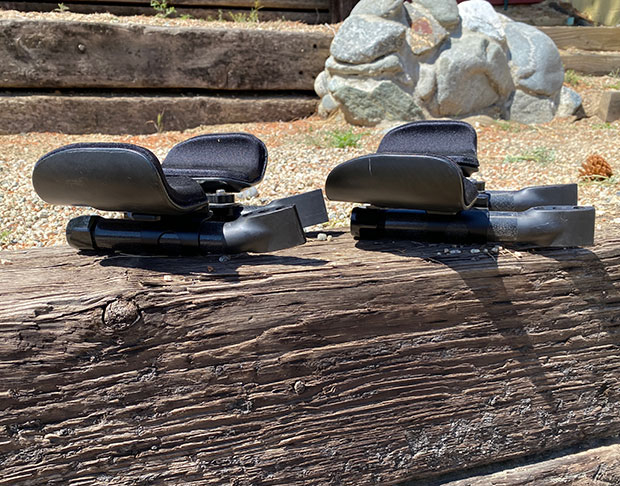
Next, as I mentioned in a prior article, this bike is made to accept aerobar extensions that begin their lives as 22mm O.D. round tubes. Those tubes insert into a special-made frame feature and there are 3 such available front ends, each with a tilt angle. (You can get 5°, 10°, 15°, and I’m riding the middle one with the others picture above.) So, tilt is there and to your spec, but, you nevertheless are limited to extensions of this sort. For me, not a big problem, because I had a set of extensions that worked quite well but, again, as I have previously written if that is a solution that you might admire there’s a length issue with that PD 43asc extension (read about them here) into this bike – it’s hard to get the distance from the pads to the hand-hold short enough for those much shorter than I am.
The above gripes are theoretical. They didn’t create an issue for me. Now let’s get to the issues I did have. These did not revolve around ride quality, but about the carry-aboards. For example, I don’t like to ride on the road without a Garmin Varia rear radar. Bear in mind this bike has an aero theme (more on that later) that forecloses on anything down between the BB and the rider’s mid thigh, e.g., no frame bottles. I epoxied a cannibalized Garmin mount to the back of the seat tube of this bike. That’s not ideal. This bike needs a mount, or some way to facilitate the mounting of a Varia.
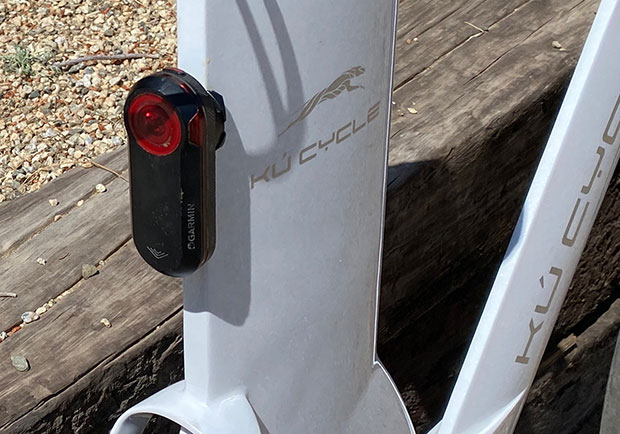
You read the Varia up front, of course, on your head unit, and because of my choice of aerobar extension I didn’t have a good option for that. I had to resort to serious McGuyvering for this, as you see. After much deep rooting around the workshop I came up with raw materials that became sub-assemblies but, look, this is a probably something that Profile Design could eventually contemplate for those using the 43asc extension. Profile does make a cage with a Garmin mount on it and that would’ve worked fine, but I like to look forward of that spot on the bike.
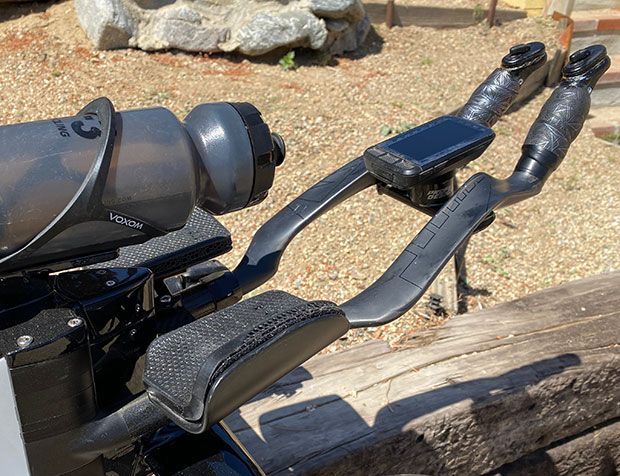
If you ride a KÚ you are wedding yourself to a hydration strategy used by most of the pros: a BTA cage and a behind-the-seat cage. This is largely because the pros rely on bottles from aid stations. Yes, many pros use the internal or built-in hydration systems on the bikes they ride, but this system of front and rear cages populated by standard water bottles is the most obvious system for the KÚ and if you want a different system then you might be outa luck.
Standover height is not an issue for me, because that’s just not how I interface with my tri bike. I start with one foot on the ground, one in the pedal, and then just go. I don’t ever really need to have both feet on the ground straddling the bike. But for generations this has been an important driving metric in bike shops. You straddle the bike, pick the bike up, and an inch minimum is how high the wheels come off the ground for sufficient “standover.” If this metric is a thing you value then you should consider another bike.
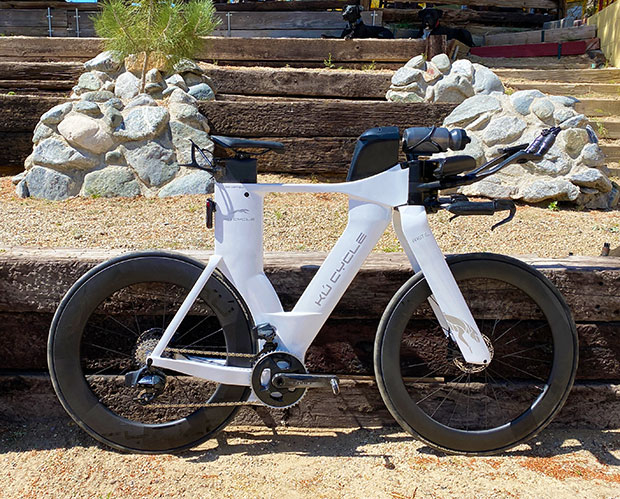
I don’t yet know whether the KÚ is going to fit in my bike case. But this is something to consider. Contemplate your ship-to-race strategy before you buy this bike. If I find some extra time I’ll tackle this and perhaps add an addendum to this review, or to the Facebook comments below.
Those are the negatives.
What I like about the KÚ begins with the Match profile. The story. The theme on paper. There are two aspects to this and first is the pathway-to-purchase and the second is the aero story. By pathway-to-purchase, expect to read a lot from me about this in the months and years ahead. We have now entered an era of really great product, and the difficulty now is in: getting that product; getting it in a timely fashion; adjusting and changing the parts on it; and everything else that attaches to the ownership process. Buying and owning a boutique bike these days is a product dream but can be a logistical nightmare. KÚ begins with what I think is the best process yet for getting a bike built to mate to your fit coordinates, though this is a fill-in PDF form and not (yet) an online form. The process (I write about this here) requires a knowledge of fit coordinates and a bike fitter is highly encouraged by KÚ. This brand has a list of fitters it works with and that’s just getting built out in the U.S. (most are in Europe, where KÚ is headquartered).
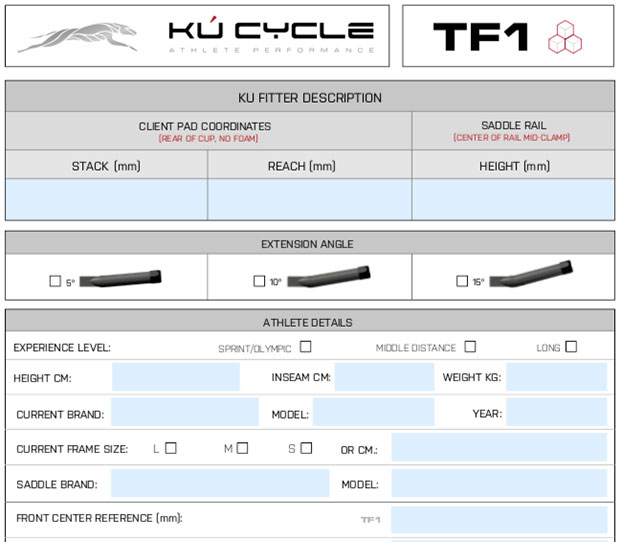
The bike arrives built and set up to your spec and the only other company I know that does this is Quintana Roo, via its Fit Ready program. Even a Speed Concept is not actually assembled to your fit coordinates at the Project One factory, though this is not as much of an issue now with electronic shifting as it was before (shift cables were invariably too long or too short depending on your position).
I had one disagreement with KÚ’s designer Richard McAinsh, whose engineering resume includes work with Formula One teams. There were two possible frame iterations for me, to match my coordinates, and one had a front center of 630mm and the other 650mm. I am much more familiar with the shorter front center (distance from BB to front wheel axle) as all the bikes that fit me (QR, Felt, Trek, Cervelo) have front centers in the 615mm to 635mm range. But Richard – who designed these KÚ bikes – prevailed upon me to opt for the longer. “You’re going to like it, I promise you.” To my surprise and delight, he was right. This bike handles very nicely and I was worried about this because the whole front end – starting with the humongous distance from bottom headset bearing to front wheel axle – is just so non-standard. I’ve never felt more like a test pilot when I pushed off and started riding. (Have you ever wondered what it must be like to pilot a new and weird aircraft for the first time?)
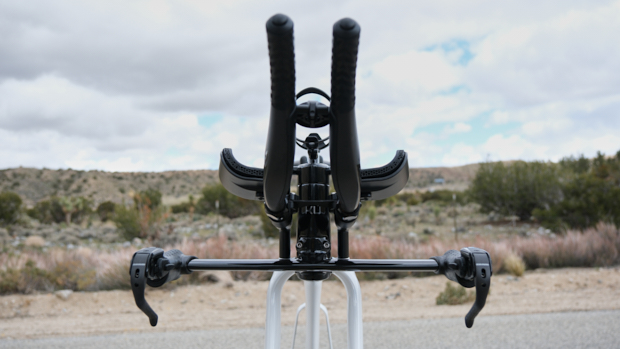
Let’s get to the aero theme here because there is one ride feature that is impacted by this. I haven’t spoken at great detail with Richard about this, but there are two design features that just are compelling themes when you look at the bike. It seems as if everyone’s “going wide” these days with their bike designs and what I mean is this: fork blades were set apart wide from the wheel; as are seat stays; and that allows the wind to flow through and past these elements rather than to get dammed up. These are obvious themes if you look at the Shiv Disc, the CADEX, even the Canyon Speedmax (though to a lesser obvious degree). But the KÚ takes this further, by lifting the midsection of the bike high, so that the air flows unimpeded below the rider’s elbows. (This is why there are no bosses for down and seat tube frame bottles.)
But… when I ride the KÚ out of the saddle, the top tube furniture does contact my thighs. This doesn’t bother me. It doesn’t restrict the way I steer the bike. But it’s a thing, and it’s an artifact of the bike’s aero theme.
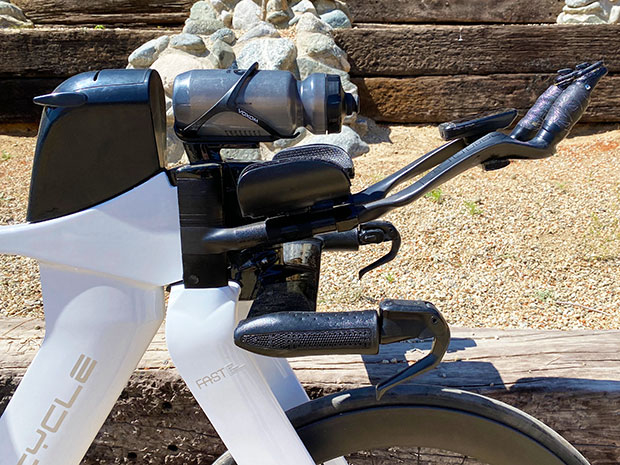
Another thing you find with this bike – and this isn’t the first bike of mine that’s featured this – is a stop that limits the turning radius. The radius is very limited. Richard said to me, “You don’t need more radius, you’ll see,” but I was very skeptical. When I attempted my first tight U-turn (as if I’m turning around a street cone) I took my inside foot out of the cleat, just in case I needed to stand down, as I suspected I would. Turns out Richard was – again – right.
What I can’t tell you is whether this bike is an aero benefit over, say, the highest end Canyons or Cervelos. It’s certainly polarizing. Many call it ugly (as they felt the Shiv Disc and the CADEX were and are ugly). My wife thinks it’s the most handsome bike in my workshop.
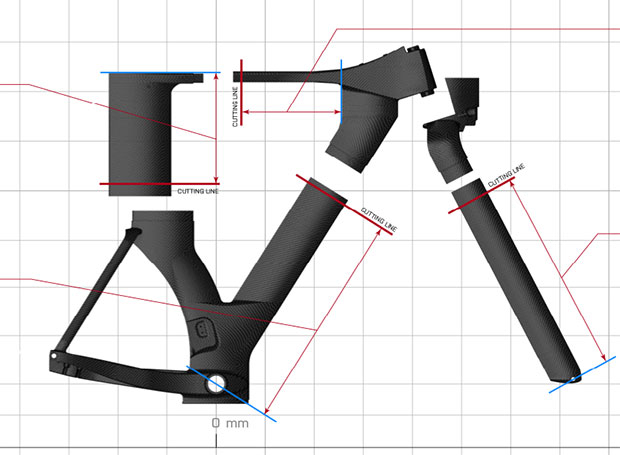
It’s custom and custom only so let’s talk about the resale of this bike. I don’t think the custom part is the difficulty. There’s a ton of adjustability in the bike, so it'll fit plenty of people. The “custom” part of this bike isn’t that it gets made into strange geometries (as you see, sections are added just to scale the frame up in size), it’s more that you’ll never find yourself between sizes. The difficulty in selling this bike if and when you’ve moved onto something else is that it’s an acquired taste. It’s like an old Zipp 3000, for those who remember that exotic beam bike from a generation ago. You either like it or you don’t.
I'm really going to need to rethink everything i know about geometry and riding style. I wrote last week about the Scott Plasma RC TT and about how they slowed the handling down via an extra 5mm of trail. And how their pros requested that. To me, not an intuitive decision. But I had the same question about the front center dimension on this bike. Yes, I want more front center for weight displacement, but bikes like that always felt very cumbersome to handle. Not the KÚ. I was suspicious of Richard McAinsh's claims. (Richard is the aerodynamicist, thought I, and I am the geometry expert). But Richard was right and I was wrong and he's made a very nice handler in the KÚ.
Here’s more about KÚ.



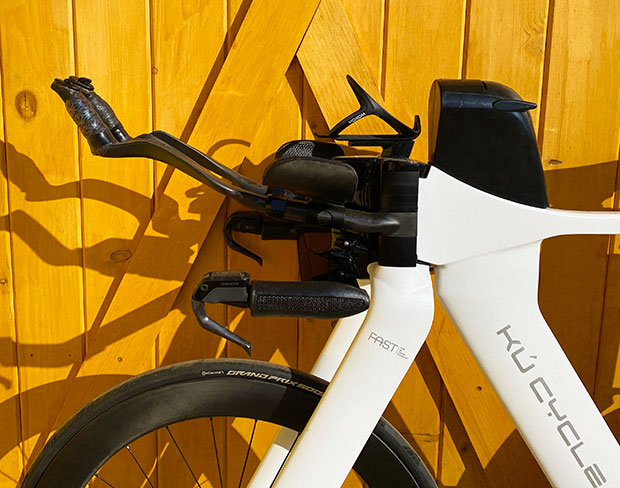
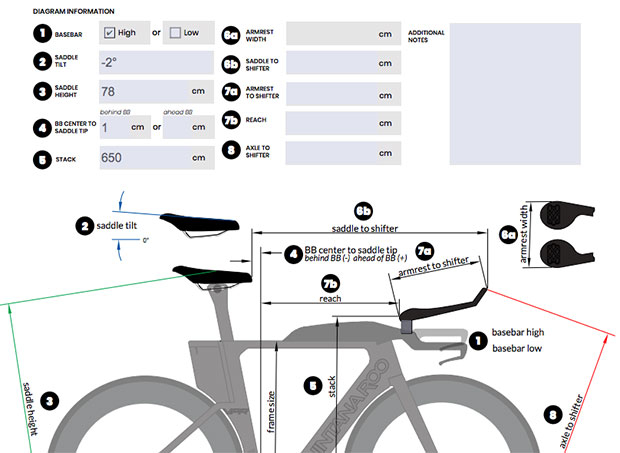
Start the discussion at slowtwitch.northend.network